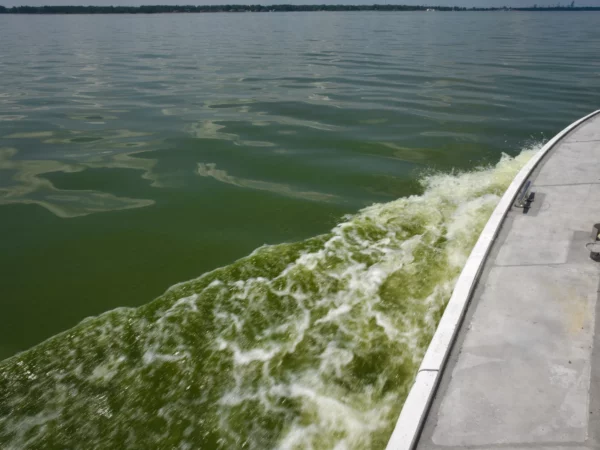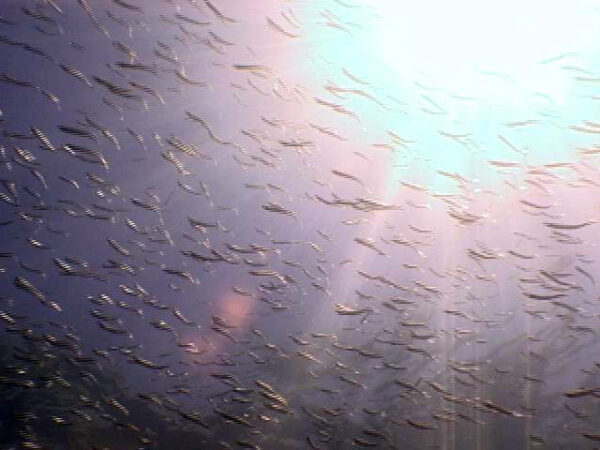
The state of Michigan on Tuesday put blame for the May dam failure that flooded Midland, Michigan, and displaced 10,000 people squarely on the dam’s owner, Boyce Hydro.
Michigan filed a lawsuit this week against Boyce Hydro seeking compensation, civil fines and damages that the state contends are the responsibility of the dam owner.
The suit was filed by the attorney general’s office on behalf of the Department of Environment, Great Lakes and Energy, and the Department of Natural Resources.
“The suit seeks to hold the dam owners accountable for the damage they caused and recoup the money the taxpayers have spent responding to the emergency created by this devastating flood,” attorney general Dana Nessel said in a press release.
Nessel sought to absolve the state of any responsibility for the dam failure in a media briefing announcing the lawsuit.
The dam’s “failure is not the result of any action or inaction by the state of Michigan,” according to Nessel, who said legal responsibility rested solely with the dam’s owner.
Homeowners impacted by the failure have filed lawsuits against EGLE, which has regulatory responsibility over dams and has known of the severity of its problems since 2018.
EGLE director Liesl Clark characterized the dam’s history as “complicated” and said the agency inherited responsibility for it in September 2018 when the responsible federal agency, the Federal Energy Regulatory Commission, revoked its license and turned it over to EGLE. The dam had a long history of noncompliance according to FERC records.
EGLE had been working with a group of homeowners who would assume responsibility for the dam and modernize it but “tragically, it was not soon enough,” according to Clark who also said the dam’s owner could have brought the dam into compliance anytime in the previous 15 years.
Attempts to secure a comment from Boyce Hydro were not successful.
High hazard, poor condition
The primary failure occurred at the Edenville Dam, which was rated as a high hazard dam in poor condition by the state’s Dam Safety Unit.
A dam’s hazard rating is determined by its potential downstream impact on life and property in the event of a failure, not its condition, dam safety staff said in a media briefing last week.
A “poor” rating indicates a safety deficiency is recognized and remedial action or further investigation is warranted. The most severe rating is “unsatisfactory” which requires immediate or emergency action.
When dams are out of compliance EGLE will take enforcement action when necessary, according to the dam safety staff, who said the goal is to “work with dam owners and bring them back into compliance.”
“EGLE had a path forward that would have Boyce Hydro out of the picture very soon,” communications manager Hugh McDiarmid told Great Lakes Now. That “would have resulted in faster, better dam upgrades than any enforcement action,” McDiarmid said.
Veteran Michigan and Great Lakes policy adviser Dave Dempsey is skeptical.
“That’s the same policy that didn’t work at the federal level for decades until we passed the Clean Air and Water Acts,” Dempsey told Great Lakes Now.
“This is what happens when environmental regulators try to work with a party to achieve compliance. It’s time for regulators like EGLE to enforce the law and protect the environment,” he said.
EGLE’s Dam Safety Unit is a staff of two and one supervisor, and is responsible for over a thousand dams scattered around the state, according to spokesperson Nick Assendelft, who said the agency is “confident in the commitment and competence” of the unit.
After the May dam failure, Michigan Gov. Gretchen Whitmer directed EGLE to review dam safety in the state. Critics have questioned the decision of having EGLE investigate itself given the agency’s potential liability based on pending lawsuits.
Read more news about the Midland dam failures on Great Lakes Now:
Midland Flooding: Climate change and rains exacerbate dam infrastructure issues
More Than Dow: Chemicals, contaminants and untreated sewage all washed out by Midland dam breaks
Rescuing History: Museum experts across Michigan race to save the Midland archive
Featured image: A look at the Sanford Dam on Wednesday, May 20, 2020. After the Edenville Dam failed and the Tittabawassee River flooded surrounding areas, many residents were urged to leave their homes and to brace themselves for the possibility of the Sanford Dam collapsing. Water flowed over the top of it through the night, but the structure is still in place. (Kaytie Boomer/The Bay City Times via AP)




